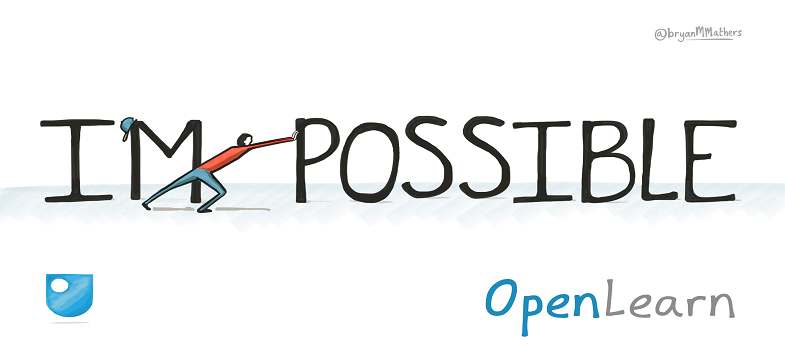8.1 Social learning in education
The last ten years has seen the way in which we communicate with each other change hugely. Social media now exists, for many, as the primary way in which they communicate and from this we have found that it is possible to interact with others and learn from each other at the same time.
From interacting with others around us about topics that have a common interest, participants join together to learn, engaging with each other in a social context in what is sometimes referred to as a community of practice (Lave and Wenger, 1991). In this context, we learn from each other, transferring knowledge in a wide range of locations and times. Social learning occurs when we learn from others around us, watching their behaviours and actions and replicating them.
For example, watching another person demonstrate performing a simple task such as making a cup of tea is more effective than reading about performing the same task in a book or a teacher simply telling a learner about it without reference to additional teaching aids. Watching someone perform the task may happen in any number of differing locations and could be discussed between many different people who have observed the same actions.
If you had not made a cup of tea before, how would you find out quickly how to do this? Many people will use a search engine to find a short video and copy how the person on the video makes a cup of tea, listening to their ideas and experiences as they demonstrate the skills.
Activity 1
Think about what you would do if you could not follow the video. How would you find out more about the subject?
Discussion
You might have thought of activities such as:
- use a forum to ask a question about how to carry out the task
- use Facebook or Twitter to ask friends for advice and guidance.
But social learning is not only about learning behaviours. The attitudes of others and the way they react to a situation can also be passed on easily, as we see every day when a child copies the way a parent, teacher or friend reacts to an everyday situation. Children often talk or move their bodies in a similar way to their parents, copying the actions that they have witnessed at home.
Social learning is therefore found in many different situations, but the widespread use of information technology has allowed learning designers to use social learning theory to create exciting and informative learning environments that move away from the traditional teacher/pupil approach to learning.
Social learning can only occur if the tools to communicate are available to your learners and, importantly, if they know how to use them. If learners will not engage with social learning then it is worthless, so designers must consider which tools can best be used on their course.
There are a wide range of applications that could be used in an open course. Some, such as Twitter, Instagram and Facebook, are free, widely used and understood globally.
You may choose to use a tool that is included as part of the open course platform that you are developing the course on, such as the Wiki tool that is available on Moodle. Try to avoid being overly reliant on one particular tool and make attempts in advance to understand how your learners feel about using them. Forced social learning is often not well received on open courses, so you should seek to avoid alienating potential learners by over reliance on it or making it a requirement for assessment.
So which tools are you going to use in your open course?
Forums can be integrated into a course to allow learners to communicate with each other regarding the topic that they are learning. These can be set up using a tool provided in your course platform or you may choose to use a social media platform such as Facebook. Twitter can be used in numerous ways in an open course, for example, learners could send questions to the tutor or facilitator and other learners using predefined hash-tags. However, it can be time consuming to monitor a high turnover of tweets. Forums may be used in differing ways within a course. For example, you may choose to assign a task to a section of your course in which learners are asked to make meaningful contributions to a forum. You may choose to have a general forum activity within your course in which learners can ask questions of each other and share experiences.
Blogging is popular throughout the world as a way of individuals expressing themselves and sharing their thoughts and ideas. Learners on your open course could be encouraged to write a regular blog of their experiences and reflections on the subject that they share with other learners and on which others can comment.Wikis can also be used to allow social learners to contribute to and compile ideas, such as a glossary that relates to the subject that you are teaching.
Live streaming software is becoming increasingly popular as a social learning tool, adding an extra social dimension to courses. Applications such as Periscope can be used to allow learners to view a task being demonstrated by the tutor or other learners and then discussions can be held on forums to draw further learning from the experience of the group and to summarise what has been demonstrated.
A potential drawback of open learning is that learners often do not get back any feedback or recognition regarding their learning, primarily because open courses are often not facilitated. This may be addressed during learning design by including quizzes or even by issuing statements of participation or open-badges. Another way is to allow for peer review or peer assessment in your design. Peer review is essentially a mechanism that allows for learners to complete a piece of work and then hand it to another learner to review and, if required, assess. Assessment is also covered in Section 6 of this course. This can act as a way of providing support and encouragement amongst learners and allow the opportunity to learn from each other. As with any form of social learning activity, the extent to which learners are required to carry out this activity needs to be carefully considered as forcing them to participate may mean they do not complete the course if it is something that they do not want to do.
Introduction


